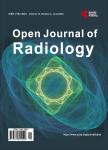Radiation Doses in Diagnostic Radiology and Method for Dose Reduction
Radiation Doses in Diagnostic Radiology and Method for Dose Reduction作者机构:Radiation Protection Department Nuclear Research Center Egyptian Atomic Energy Authority Cairo Egypt Radiology Unit Medical Administration Nuclear Research Center Egyptian Atomic Energy Authority Cairo Egypt
出 版 物:《Open Journal of Radiology》 (放射学期刊(英文))
年 卷 期:2023年第13卷第1期
页 面:34-41页
学科分类:1002[医学-临床医学] 100210[医学-外科学(含:普外、骨外、泌尿外、胸心外、神外、整形、烧伤、野战外)] 10[医学]
主 题:Radiology Entrance Skin Dose Chest X-Ray Dose Minimization
摘 要:Objective: The current research study aims to calculate entrance surface air kerma for skull, chest, cervical spine, lumbar spine, and pelvic X-ray examinations in interior posterior and posterior interior positions and generate a method for chest dose reduction to decrease radiation risk. Materials and Methods: The indirect dose measurement was used in the current research. The X-ray tube output was measured using RAD-CHECK Plus ionization chamber and the indirect entrance surface air kerma was calculated via applying physical acquisition parameters such as a focus on skin distance, tube current times exposure time (mAs), and applied tube voltage (kV), and applying a mathematical model. Results: The main findings were obtained from comparing the radiation doses with the reference levels of International organizations such as the American College of Radiology and the International Atomic Energy Authority. The mean entrance skin dose for the skull (AP), skull (PA), skull (LAT), cervical spine (PA), cervical spine (LAT), lumbar spine (AP), lumbar spine (LAT), pelvis (AP), and pelvis (LAT) of adult X-ray examinations was within the diagnostic reference dose level values obtained by ACR (2018) except for the ESD for chest (AP) which was 0.88 mGy. Conclusions: The results of the study concluded that by adjusting the applied tube voltage, kV, and tube current product time, mAs decreased the radiation dose to the chest X-ray by 58%.



